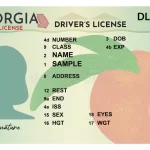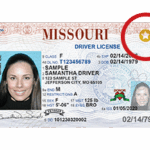From Keys to Ownership: A Comprehensive Guide to Vehicle Title Transfers

Buying or selling a vehicle is a significant transaction, and ensuring a smooth and legal transfer of ownership is crucial. The vehicle title, a legal document proving ownership, is at the heart of this process. While the specifics may vary slightly from state to state, the core principles of a vehicle title transfer remain consistent. This comprehensive guide will walk you through the entire process, empowering you to navigate the complexities and ensure a hassle-free transfer.
Why is the Title Transfer So Important?
Think of the title as the birth certificate for your vehicle. It’s the definitive proof of ownership and is essential for:
- Legal Ownership: Without a properly transferred title, you are not legally recognized as the owner of the vehicle, regardless of whether you have the keys and the car in your possession.
- Registration and Insurance: You cannot register or insure a vehicle without a valid title in your name.
- Selling the Vehicle: If you ever decide to sell the vehicle, you will need the title to legally transfer ownership to the new buyer.
- Avoiding Legal Issues: A properly transferred title protects you from potential legal liabilities associated with the vehicle, such as traffic violations or accidents incurred by the previous owner after the sale.
- Peace of Mind: Knowing you have legally secured your ownership of the vehicle provides peace of mind and protects your investment.
Understanding the Vehicle Title:
Before diving into the transfer process, it’s essential to understand the anatomy of a vehicle title. While designs vary slightly by state, most titles contain similar key information:
- Vehicle Identification Number (VIN): A unique 17-character code that identifies the vehicle.
- Year, Make, and Model: Details about the vehicle’s specifications.
- Owner Name(s) and Address(es): The legal owner(s) of the vehicle at the time the title was issued.
- Title Number: A unique identifier assigned to the title itself.
- Odometer Reading: The mileage of the vehicle at the time of the title transfer.
- Lien Information (if applicable): Details about any outstanding loans or liens on the vehicle.
- Date of Issue: The date the title was originally issued.
- State Seal or Official Stamp: Authenticates the title as an official document.
- Transfer Section: The section dedicated to recording the sale information, including the buyer’s name and address, sale price, and date of sale.
- Signatures: Spaces for both the buyer and seller to sign and acknowledge the transfer of ownership.
Who is Responsible for the Title Transfer?
The responsibility for completing the title transfer typically rests on both the buyer and the seller. However, the specific tasks and roles may differ slightly:
- Seller’s Responsibilities:
- Providing a Valid Title: The seller is responsible for providing a clear and valid title to the buyer. This means the title should be free of any alterations, erasures, or damage.
- Completing the Seller’s Section: The seller must accurately fill out the “Seller” section of the title, including their name, address, date of sale, odometer reading, and sale price.
- Signing the Title: The seller must sign the title in the designated space, often in the presence of a notary public.
- Removing License Plates: In most states, the seller is responsible for removing the license plates from the vehicle.
- Notifying the DMV (Sometimes): Some states require the seller to notify the Department of Motor Vehicles (DMV) about the sale of the vehicle.
- Buyer’s Responsibilities:
- Inspecting the Title: The buyer should carefully inspect the title for any errors, alterations, or discrepancies before completing the purchase.
- Completing the Buyer’s Section: The buyer must accurately fill out the “Buyer” section of the title, including their name, address, and date of purchase.
- Signing the Title: The buyer must sign the title in the designated space, often in the presence of a notary public.
- Submitting the Title to the DMV: The buyer is responsible for submitting the completed title, along with any other required documents and fees, to the DMV to officially transfer ownership.
- Registering the Vehicle: The buyer must register the vehicle in their name and obtain new license plates.
- Insuring the Vehicle: The buyer must obtain insurance coverage for the vehicle.
Step-by-Step Guide to Completing a Vehicle Title Transfer:
Now, let’s break down the process into actionable steps:
Step 1: The Seller’s Actions Before the Sale:
- Locate the Title: The first step is to locate the vehicle’s title. If you can’t find it, you’ll need to apply for a duplicate title at your local DMV. This process usually involves filling out an application form, providing proof of identification and ownership, and paying a fee.
- Check for Liens: If you have a loan on the vehicle, there will be a lien listed on the title. You must satisfy the lien before selling the vehicle. Contact your lender for instructions on how to obtain a lien release. The lien release is a document from the lender stating that the loan has been paid off.
- Prepare Supporting Documents: Gather any documents that might be required for the transfer, such as your driver’s license, vehicle registration, and proof of insurance (depending on your state’s requirements).
Step 2: The Sale and Title Completion:
- Agree on a Price and Terms: Negotiate the sale price and any other terms of the sale with the buyer.
- Complete the Bill of Sale (Optional but Recommended): A bill of sale is a written document that records the details of the sale, including the names and addresses of the buyer and seller, the vehicle’s description (year, make, model, VIN), the sale price, and the date of sale. While not always required, a bill of sale provides valuable protection for both parties in case of any future disputes. Templates are often available online or at your local DMV.
- Accurately Complete the Title:
- Odometer Reading: Record the current odometer reading in the designated space on the title. Ensure both the buyer and seller witness and acknowledge the reading. Tampering with the odometer is illegal.
- Sale Price: Record the agreed-upon sale price in the designated space. This information may be used for tax purposes.
- Buyer Information: The buyer must accurately fill in their name, address, and any other required information in the “Buyer” section of the title.
- Date of Sale: Record the date the sale occurred.
- Signatures: Both the buyer and seller must sign the title in the designated spaces. In some states, these signatures must be notarized.
- Provide the Title to the Buyer: Once the title is properly completed and signed, the seller gives the original title to the buyer.
- Remove License Plates: In most states, the seller is responsible for removing the license plates from the vehicle. You may be able to transfer the plates to another vehicle or return them to the DMV.
Step 3: The Buyer’s Actions Post-Sale:
- Protect the Title: Treat the title like cash! Keep it in a safe place to prevent loss or damage.
- Obtain Insurance: Immediately obtain insurance coverage for the vehicle.
- Visit the DMV: Within the timeframe specified by your state (usually within 30 days), visit your local DMV to complete the title transfer.
- Submit Required Documents:
- Completed Title: The original title, properly completed and signed by both the buyer and seller.
- Application for Title: A form provided by the DMV to formally request the title transfer.
- Proof of Identification: Your driver’s license or other acceptable form of identification.
- Proof of Residency: A document that verifies your address, such as a utility bill or lease agreement.
- Bill of Sale (if required): Some states require a bill of sale to verify the sale price.
- Odometer Disclosure Statement (if required): A separate form that confirms the odometer reading at the time of sale.
- Vehicle Inspection Report (if required): Some states require a vehicle inspection before the title can be transferred.
- Lien Release (if applicable): If the vehicle had a lien that has been satisfied, you’ll need to provide the lien release document.
- Pay Fees and Taxes: You will need to pay the required title transfer fees and any applicable sales taxes. The amount of these fees varies by state.
- Register the Vehicle: Once the title transfer is complete, you will need to register the vehicle in your name and obtain new license plates.
- Receive the New Title: The DMV will issue a new title in your name, which will be mailed to your address. Keep this document in a safe place.
Common Issues and How to Resolve Them:
- Lost Title: If the seller has lost the title, they need to apply for a duplicate title at the DMV before the sale can proceed.
- Damaged Title: If the title is damaged or illegible, it may not be accepted by the DMV. The seller will need to apply for a replacement title.
- Incorrect Information: If there are errors on the title, such as a misspelled name or incorrect VIN, the seller will need to contact the DMV to correct the errors.
- Outstanding Liens: If there is an outstanding lien on the vehicle, the seller must satisfy the lien before the title can be transferred.
- Seller Unavailable: If the seller is deceased or otherwise unavailable to sign the title, you will need to consult with the DMV for specific instructions on how to proceed. This may involve probate court or other legal processes.
- Notarization Requirements: Failing to have the signatures notarized when required by the state will invalidate the transfer.
Tips for a Smooth Title Transfer:
- Research Your State’s Requirements: Each state has its own specific rules and regulations regarding vehicle title transfers. Visit your local DMV website or contact them directly to learn about the requirements in your state.
- Be Prepared: Gather all the necessary documents and information before you begin the title transfer process.
- Double-Check Everything: Carefully review all documents and information for accuracy before submitting them to the DMV.
- Don’t Delay: Complete the title transfer as soon as possible after the sale to avoid any potential problems.
- Keep Records: Keep copies of all documents related to the sale and title transfer for your records.
- Consider Using a Third-Party Service: If you find the title transfer process confusing or time-consuming, you can consider using a third-party service that specializes in vehicle title transfers. These services can handle all the paperwork and ensure that the transfer is completed correctly.
- When in Doubt, ask: If you have any questions or concerns about the title transfer process, don’t hesitate to contact your local DMV for assistance. They are there to help you navigate the process.
State-Specific Considerations:
While the general process remains the same, specific requirements and nuances vary from state to state. Some examples include:
- Notary Requirements: Some states require signatures on the title to be notarized, while others do not.
- Odometer Disclosure Statements: Some states require a separate odometer disclosure statement in addition to the odometer reading on the title.
- Vehicle Inspections: Some states require a vehicle inspection before the title can be transferred.
- Sales Tax: The amount of sales tax charged on vehicle purchases varies by state.
- Seller Notification: Some states require the seller to notify the DMV about the sale of the vehicle.
- Acceptable Forms of Payment: The forms of payment accepted by the DMV for title transfer fees may vary by state.
Conclusion:
Completing a vehicle title transfer is a critical step in buying or selling a vehicle. By understanding the process, gathering the necessary documents, and following the instructions outlined in this guide, you can ensure a smooth and legal transfer of ownership. Remember to research your state’s specific requirements and don’t hesitate to seek assistance from your local DMV if you have any questions. Taking the time to complete the title transfer correctly will protect your interests and provide peace of mind knowing you are the legal owner of your vehicle. Good luck!














